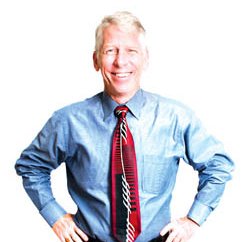
There are about 120,000 young people under the age of 18 with Medi-Cal dental insurance in Sacramento County. Counting both baby and adult teeth, Denti-Cal is overseeing about 3 million teeth. A big and important job.
Unfortunately, Sacramento’s grownups have not met this challenge. In 1994, a pilot project moved many Sacramento Denti-Cal beneficiaries into managed care dental plans. Instead of reimbursing dentists for services rendered, dental HMO plans would be paid a set amount for covering a certain number of eligible people. The hope was that this managed care system would cut administrative costs, and provide less expensive coverage.
However, a 2010 report by First 5 Sacramento Commission revealed that the for-profit HMO dental plans were paid the same amount whether they provided services or not, and these HMOs were only seeing about 20 percent of the eligible patients.
After this report was published, California President Pro Tem Darrell Steinberg called for an investigation. The five HMOs said they would do a better job. But did the state ask for our money back? No. Two of the HMOs were dropped and the state promised to do a better job monitoring the program.
According to data from the first quarter of 2013, while the Sacramento County HMOs are doing better, they are still underperforming. Federal data shows that nearly 56 percent of the 5.1 million children enrolled in Medi-Cal did not receive dental care. How do we fix this? There are two options.
The first option is to adopt the program that nearly all of California’s other counties have: pay-for-services. While better than Sacramento’s HMO program, there are significant problems with this model, in particular the low Medi-Cal reimbursement rate. The rate is so low that the vast majority of dentists refuse to see Medi-Cal patients. And many of the dentists that do accept Medi-Cal patients restrict the number of patients they will accept.
But there is now a better option. In the Byzantine world of healthcare reimbursement, the federal government has different rates for different groups. Individual dentists are paid one rate and Federally Qualified Health Centers are paid at much higher rates. If we expand the number of FQHC dental clinics in Sacramento County, we can create a much better system for our kids. We would have enough dentists to provide care for our Medi-Cal children’s 3 million teeth.
And we are already making progress. One of Sacramento’s FQHCs, WellSpace Health, with only 20 dental chairs, has already had 32,757 dental visits between July 1, 2014, and May 1, 2015, according to data from First 5.
And with more FQHCs, we can do more. Much more.
There are bureaucratic difficulties. There are cash flow difficulties, because the feds do not pay promptly. But at the end of the day, if Sacramento grownups do their job, the feds will provide the funds for us to provide excellent care for these 3 million teeth. It is not a money issue. It is a solvable problem. Our kids need to brush twice a day. And the grownups need to fix the Denti-Cal problem.
